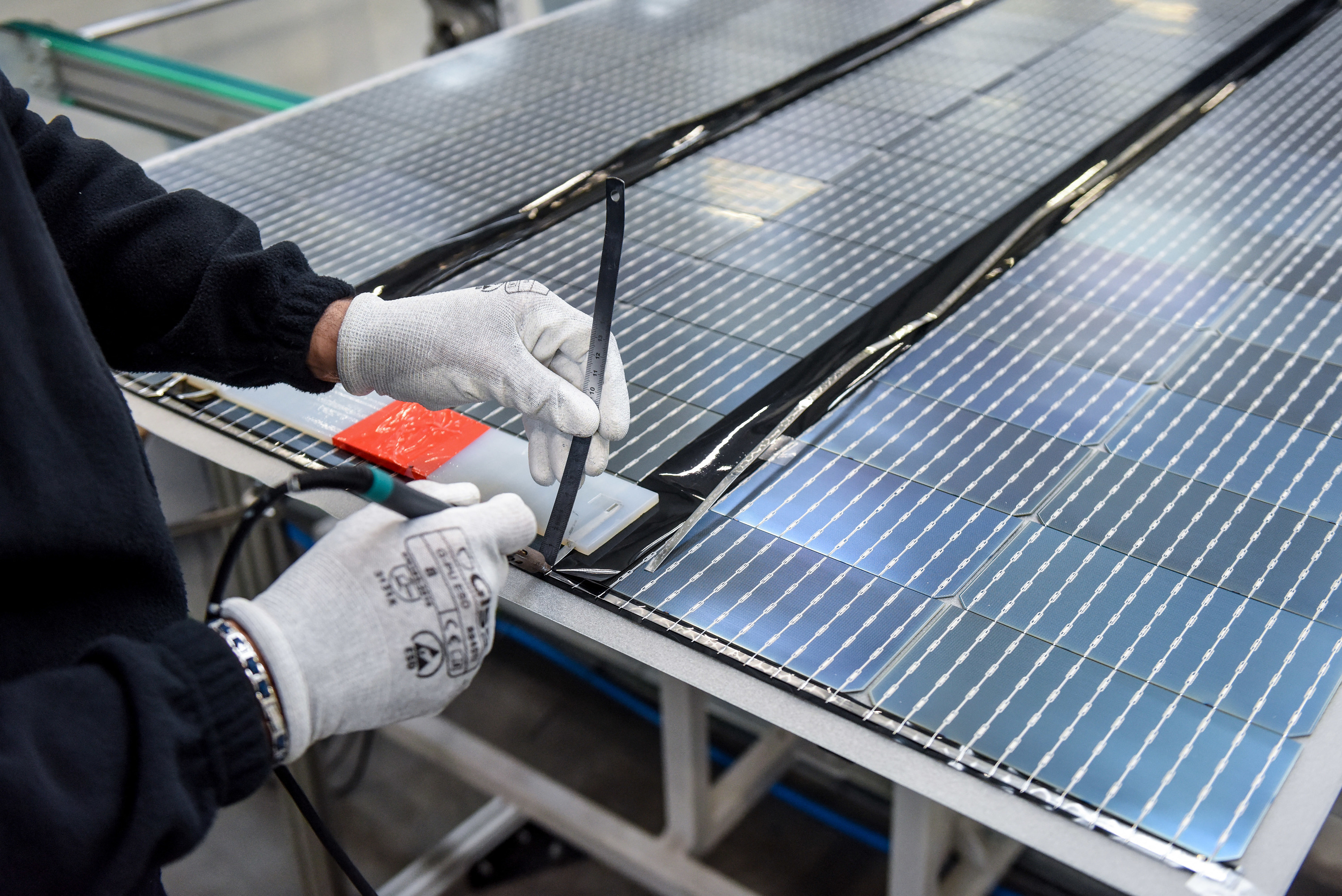Year-on-year inflation finally stood at 10.5% last month, one tenth more than the advance figure and three tenths below that of July. The rise in prices is above two digits for another month, driven by the cost of energy and, to a lesser extent, of fresh products, restaurants and tourist packages. Compared to last month, prices have risen 0.3%.
The indicator has not dropped below 10 points for months, far from the 2% that the European Union (EU) considers desirable. It finally moderated three tenths compared to July, pulling down on all transport, with a rate of 11.5%, four and a half points lower than that of the previous month, due to the lower price of fuels and lubricants compared to the rise August 2021, says the INE. But, despite the fact that fuel prices have fallen, housing, which increased by 3.6%, is the component that pushes the August data the most, while the rise in fresh food continues.
Core inflation, which excludes from the statistics the evolution of the most volatile prices of unprocessed food and energy products, rises four tenths to 6.4%, the highest since January 1993, and places its difference with that of the General CPI in more than four points.
The Harmonized Consumer Price Index (IPCA), for its part, remained at 10.5% year-on-year, two tenths more than the advance data.
In August, what has become more expensive compared to the same month last year is the housing group (invoices associated with housing, not the price of housing itself, mainly the electricity and gas bill). The group of housing expenses rises 24.8% compared to last year.
Food and non-alcoholic beverages rose by 13.8% in the interannual rate, also above the general CPI and three tenths more than last month, its highest rate since the beginning of the series prepared by the INE, in January 1994 Milk, cheese and eggs are especially expensive, to which is added meat and bread and cereals.
By elements, what increased the most in August compared to July were liquid fuels (79.1%), other oils (71.2%), electricity (60.6%), flour and other cereals (39%) and butter (31.8%). What has fallen the most have been tolls and parking (-20.5%), mobile phone services (-6.3%), mobile phone equipment (-5.1%), audiovisual equipment (-4.9 ) and personal computers (-4.6%).
The inter-monthly CPI (August prices compared to July prices) stands at 0.3%, a rise also attributed mainly to housing, which rises 3.6% also due to the electricity bill, since instead, it lowers the gas bill. To housing expenses are added those of food and non-alcoholic beverages: everything goes up in a month, especially milk, cheese and eggs, meat, bread and cereals, and legumes and vegetables, except for fruits, which go down .
Leisure and culture are also more expensive due to the increase in tourist packages, to which are added the prices of hotels, cafes and restaurants. Bala, on the other hand, transport 3.7% due to the drop in fuel and lubricant prices. points out the INE. The prices of clothing and footwear also fell (-0.6%) due to the end of the summer sales campaign.
The CPI at Constant Taxes (CPI-IC), an indicator that has been included in the statistics since 2012, and which measures how prices would have evolved if indirect taxes such as VAT had not been modified, stands at 11.2%, seven tenths above that registered by the general CPI. The monthly variation rate of the IPC-IC is 0.3%. For its part, the IPCA at Constant Taxes (IPCA-IC) presents an annual rate of 11.2%, seven tenths more than that of the IPCA, and the monthly rate of 0.3%.
Considering the territorial distribution, the annual rate of the CPI moderates in August compared to July in 13 of the 17 autonomous communities, increases in two and remains stable in the remaining two. The greatest decreases occurred in Castilla-La Mancha, with a decrease of 0.6 points, and in Asturias and Galicia, with decreases of 0.5 points in both autonomies. The increases occurred in the Balearic Islands and the Canary Islands, with rises of 0.4 and 0.1 points, respectively.
Prices rise the most this month compared to August 2021 in Castilla-La Mancha, 12.6%, ahead of Castilla y León (11.8%), Extremadura (11.5%) and La Rioja (11, 4%). Aragon (11.1%), Galicia, Murcia and Navarra (11.0%), Andalusia and the Valencian Community (10.9%), the Balearic Islands (10.7% ) and Asturias (10.6%).
Below are the Basque Country (10.3%), Catalonia (10.2%), Cantabria (10.1%), the Canary Islands (9.5%) and Madrid, which is now the least inflationary community, with a rise 9.3%. In Melilla the increase is equal to the average (10.5%) and in Ceuta it drops to 9.8%.
Compared to July, compared to the decreases of 0.1% in Castilla-La Mancha and Navarra, prices rose more in the Balearic Islands (0.7%) and the Canary Islands (0.6%), they remained the same in Madrid (0. 0%) and grew less in Castilla y León and Galicia (0.1%).
In the first eight months of the year, the most inflationary community continues to be Castilla-La Mancha, which in any case drops one tenth to 7.3%, followed by Castilla y León (6.7%) and Extremadura and Galicia (6 .6%), while Madrid remains at 5.1% and the Canary Islands rise to 5.3%.

 Torrential rains in Dubai: “The event is so intense that we cannot find analogues in our databases”
Torrential rains in Dubai: “The event is so intense that we cannot find analogues in our databases” Rishi Sunak wants a tobacco-free UK
Rishi Sunak wants a tobacco-free UK In Africa, the number of millionaires will boom over the next ten years
In Africa, the number of millionaires will boom over the next ten years Iran's attack on Israel: these false, misleading images spreading on social networks
Iran's attack on Israel: these false, misleading images spreading on social networks New generation mosquito nets prove much more effective against malaria
New generation mosquito nets prove much more effective against malaria Covid-19: everything you need to know about the new vaccination campaign which is starting
Covid-19: everything you need to know about the new vaccination campaign which is starting The best laptops of the moment boast artificial intelligence
The best laptops of the moment boast artificial intelligence Amazon invests 700 million in robotizing its warehouses in Europe
Amazon invests 700 million in robotizing its warehouses in Europe Switch or signaling breakdown, operating incident or catenaries... Do you speak the language of RATP and SNCF?
Switch or signaling breakdown, operating incident or catenaries... Do you speak the language of RATP and SNCF? Transport in Île-de-France: operators are pulling out all the stops on passenger information before the Olympics
Transport in Île-de-France: operators are pulling out all the stops on passenger information before the Olympics Radio audiences: France Inter remains firmly in the lead, Europe 1 continues its rise
Radio audiences: France Inter remains firmly in the lead, Europe 1 continues its rise Russian cyberattacks pose a global “threat”, Google warns
Russian cyberattacks pose a global “threat”, Google warns A new Lennon-McCartney duo, more than 50 years after the Beatles split
A new Lennon-McCartney duo, more than 50 years after the Beatles split The Curse vs Immaculée: two thrillers but only one plot
The Curse vs Immaculée: two thrillers but only one plot Mathieu Kassovitz adapts The Beast is Dead!, the comic book about the Second World War and the Occupation by Calvo
Mathieu Kassovitz adapts The Beast is Dead!, the comic book about the Second World War and the Occupation by Calvo Goldorak 'has never lived so much as now'
Goldorak 'has never lived so much as now' Skoda Kodiaq 2024: a 'beast' plug-in hybrid SUV
Skoda Kodiaq 2024: a 'beast' plug-in hybrid SUV Tesla launches a new Model Y with 600 km of autonomy at a "more accessible price"
Tesla launches a new Model Y with 600 km of autonomy at a "more accessible price" The 10 best-selling cars in March 2024 in Spain: sales fall due to Easter
The 10 best-selling cars in March 2024 in Spain: sales fall due to Easter A private jet company buys more than 100 flying cars
A private jet company buys more than 100 flying cars This is how housing prices have changed in Spain in the last decade
This is how housing prices have changed in Spain in the last decade The home mortgage firm drops 10% in January and interest soars to 3.46%
The home mortgage firm drops 10% in January and interest soars to 3.46% The jewel of the Rocío de Nagüeles urbanization: a dream villa in Marbella
The jewel of the Rocío de Nagüeles urbanization: a dream villa in Marbella Rental prices grow by 7.3% in February: where does it go up and where does it go down?
Rental prices grow by 7.3% in February: where does it go up and where does it go down? Europeans: the schedule of debates to follow between now and June 9
Europeans: the schedule of debates to follow between now and June 9 Europeans: “In France, there is a left and there is a right,” assures Bellamy
Europeans: “In France, there is a left and there is a right,” assures Bellamy During the night of the economy, the right points out the budgetary flaws of the macronie
During the night of the economy, the right points out the budgetary flaws of the macronie Europeans: Glucksmann denounces “Emmanuel Macron’s failure” in the face of Bardella’s success
Europeans: Glucksmann denounces “Emmanuel Macron’s failure” in the face of Bardella’s success These French cities that will boycott the World Cup in Qatar
These French cities that will boycott the World Cup in Qatar Champions League: semi-final schedule revealed
Champions League: semi-final schedule revealed Serie A: AS Roma extends Daniele De Rossi
Serie A: AS Roma extends Daniele De Rossi Ligue 1: hard blow for Monaco with Golovin’s premature end to the season
Ligue 1: hard blow for Monaco with Golovin’s premature end to the season Paris 2024 Olympics: two French people deprived of the Olympic Games because of a calculation error by the international federation?
Paris 2024 Olympics: two French people deprived of the Olympic Games because of a calculation error by the international federation?


















